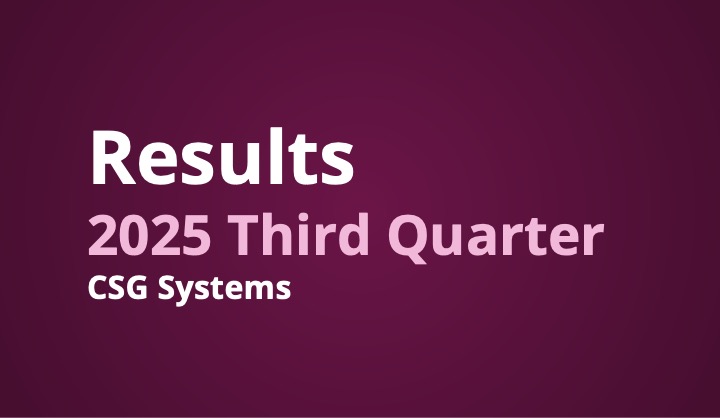Some customer experience teams believe a common myth: “If a customer finishes the journey, it was a success.” But this definition of success reflects the business’ perspective—not the customer’s. Customers can complete tasks like paying a bill or activating their account and still walk away feeling frustrated, confused or quietly dissatisfied.
Broken customer journeys—riddled with friction points, CX paper cuts, and inconsistencies—make it harder for customers to achieve their goals. For example, struggling to find the payment portal, log in or understand billing changes often frustrates internet customers.
Customer centric organizations employ customer journey data analytics to understand and improve CX. Gartner defines customer journey analytics as “solutions that track and analyze how customers and prospects interact with an organization across multiple channels over time.”
Why do brands and customers often have different views of what makes an interaction successful? Because most customer journey data analytics only capture what CX leaders think is happening, not what is happening.
When it first started working with CSG, one U.S.-based brand with 80 million customers noticed a puzzling trend. The brand enjoyed strong account signups, yet it experienced rising costs and declining customer loyalty. Its leaders weren’t able to diagnose this trend until they analyzed real customer behavior to uncover customer journey insights.
CSG helps organizations understand and improve customer journeys through a discovery-based approach that we call current-state analytics. Instead of validating assumptions or theoretical journey maps, current-state analytics surfaces the actual experiences customers are having today, based on the full history of their interactions. Customer journey insights help inform improvements in business processes, CX and business outcomes.
Keep reading to learn how customer journey data analytics can help you identify and fix broken customer journeys.
The percentage of customers who pay their bills on time doesn’t tell you anything about what hoops customers jumped through to complete the task.
A Customer Journey May Be Broken—Even When Metrics Look Fine
CX teams may assume that good conversion rates (the percentage of customers who complete a desired action) mean that customer experience must also be positive. That isn’t necessarily true. Conversion metrics only measure visible outcomes—not friction points in the customer journey. The percentage of customers who pay their bills on time doesn’t tell you anything about what hoops customers jumped through to complete the task.
You don’t know what you don’t know. If you’re only gathering data around predefined journeys, your customer journey data analytics system won’t discover hidden friction points in the customer journey. For example, a bill payment journey may include several steps, such as receiving a payment reminder email or text, logging into the payment portal, and making a one-time payment. If you only examine what’s happening during those steps, you won’t realize you have a broken customer journey. You’ll miss the fact that a customer spent five minutes on the FAQs page looking for an explanation of an unexpected fee, then called the contact center and was transferred to two agents before receiving an answer.
Hidden friction quietly erodes customer satisfaction and loyalty by increasing the effort required to complete desired tasks. Gartner research found that customers who had a low-effort experience were more likely to remain loyal to a company, and 89% of loyal customers reported that the company made it easy for them to handle their issue. Friction in the customer journey may lead to churn. A Western European telco discovered that customers who had to make two or more phone calls to resolve connectivity issues were almost twice as likely to walk away at the end of their contract.
Remember the 80-million-customer brand we mentioned earlier? It struggled to identify hidden pain points in its customer communications, across multiple engagement channels (email, SMS and call center). Its siloed systems provided only a fragmented view of customer interactions, which resulted in irrelevant communications and made it difficult for the CX team to understand why operational and customer care costs were rising. The CX team needed a customer journey data analytics system to detect friction points in broken customer journeys.
How to Find Hidden Friction Before It Hurts Your Business
Many businesses take what’s called a prescriptive approach to customer journey data analytics. They start with customer journey mapping, and then they analyze customer progression through the predefined journeys. Businesses often use this approach to validate assumptions about what happens during the journey. Taking the billing example mentioned earlier, the business assumes that a customer paying a bill typically follows these steps: receiving a payment reminder, logging into the payment portal, and making a one-time payment. And so the business would map that journey, as a start, with those specific touchpoints.
As you can tell, traditional customer journey mapping assumes you know what the journey looks like. But customer journeys are unique and often complicated, seldom following the “ideal” pathway. Building a journey map to guide customer journey data analytics can introduce bias—essentially predefining what signals the system should pay attention to. The system will pick up on events that you already thought were happening. For example, analytics may detect that customers are having trouble logging into the payment portal—something you already knew or suspected. Meanwhile, you may miss other important friction points in the customer journey that you didn’t think to look for—such as customers searching for information about hidden fees, or time-consuming contact center calls needed to resolve bill confusion.
Siloed customer data makes it difficult to understand what is happening with customers. Connecting data across systems and departments is the first step in improving customer experience. Merging siloed databases is like uncovering a gold mine. If you only dig where gold is already visible, you miss the richer veins hidden just below the surface. True discovery reveals the untapped insights you can’t see at first glance.
To identify hidden friction points in the customer journey, you need to surface unknown patterns through customer journey discovery.Customer journey discovery allows users toactivate journey analytics without establishing journey maps. Instead, journeys naturally emerge through the analysis of customer activity. This unstructured approach allows you to use a year’s worth of existing customer data to identify friction points immediately, instead of waiting months for customer journey insights.
Going back to the major brand in the example, CSG helped it integrate more than two dozen siloed systems and analyze customer journeys using current-state analytics. Through discovery, customer journey data analytics revealed friction points the CX team didn’t know existed, such as:
- Customers received inconsistent messages across channels.
- Payment communications were mistimed and confusing, causing delays and support calls.
Turning Journey Data Into Insights (Not Just More Noise)
Customer data is necessary—but not sufficient—to improve CX. You must know how to use that data to improve business processes and customer journeys. In short, you need customer journey insights to help you interpret mountains of data, determining what needs improvement and what matters most. The right customer journey data analytics system does more than just aggregate customer data in charts and dashboards. It helps you understand how individual customers experience your brand at every touchpoint—and what impact those interactions have.
The major brand used the journey analytics system to process nearly 170 million records daily, providing full journey views. The system detected common friction patterns across onboarding, payment and support journeys. Visual customer journey discovery depicted customers’ real paths, not imagined ones based on dashboard assumptions. Customer journey insights prioritized the exact journey steps to address to make the biggest impact on CX outcomes.
Beyond Insight: How the Brand Took Action to Fix Broken Experiences
Discovery doesn’t fix broken customer journeys. That requires action—and the technology to take it. But fixing broken customer experiences isn’t about adding more tools, but making existing interactions easier and more connected. The right customer journey data analytics system, like the one included in CSG Xponent, makes that happen.
Based on insights uncovered through current-state analytics, major brand’s CX team took several action steps to improve data management, communication processes, and customer journeys:
- Unified and structured their historical data for a 360° view
- Aligned communications across email, SMS and phone
- Simplified payment reminder and onboarding journeys
The brand achieved these outcomes:
- Decreased support call volume and operational costs
- Increased 7-day payment rates and payments captured
Stop Guessing, Start Fixing Broken Experiences
You never get a second chance to make a good first impression. But you can apply what you’ve learned from customers’ previous interactions to improve them going forward.
Start by looking for hidden friction that may be eroding customer satisfaction and loyalty, even when customer journeys look “fine.” True journey success isn’t measured by task completion, but by the delivery of simple, convenient and consistent experiences across every channel. Customer journey discovery through current-state analytics turns existing customer data into insights you can act on. This helps you quickly make data-informed adjustments that can improve business outcomes.
CSG Xponent is a customer experience platform that connects your systems, helping you anticipate customers’ needs and deliver the right message at the right time, in the right channel to build loyalty and prevent churn. Xponent includes:
Journey analytics and insights. Xponent now includes current-state analytics to analyze customer activity and detect hidden friction points without journey mapping.
Journey orchestration. Powered by a decisioning engine, Xponent provides next-best-action recommendations based on real-time customer behavior and business rules and delivers that action.
Omnichannel communication. Xponent determines what channel to use for each message to get the fastest response from each customer. The system coordinates messages across channels and departments to send fewer, more personalized and impactful messages at the right time.
Don’t guess where friction exists
Use customer journey data analytics to find and fix hidden problems—and build stronger, longer-lasting customer relationships.











